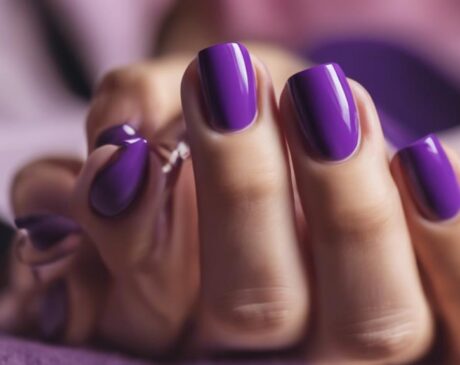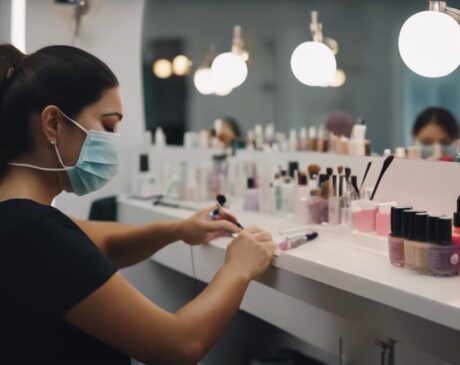Does Glue on Nails Damage Nails?
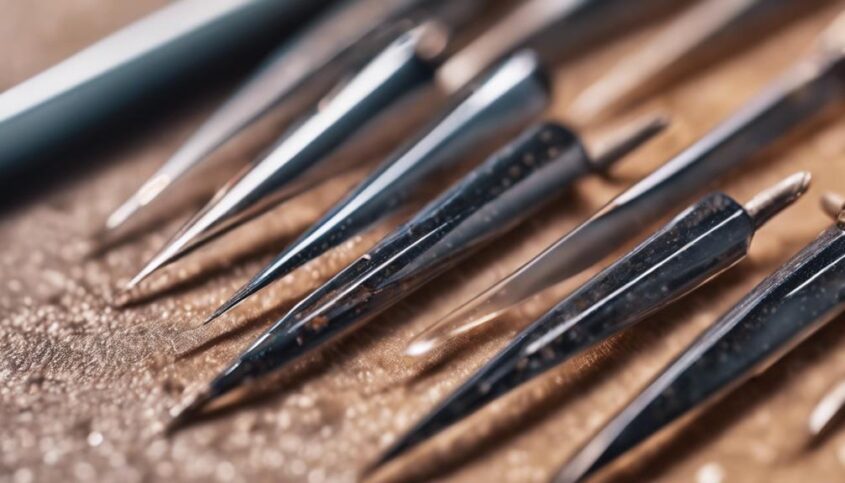
Applying glue-on nails can potentially damage your natural nails if not done correctly. The chemicals in the glue can weaken your nails over time, leading to thinning, peeling, and breakage. Be cautious of using too much glue as it can cause dryness and brittleness. Take steps to minimize the potential damage by following proper application techniques and removal precautions. Consider the benefits and risks of glue-on nails before proceeding further. Further insights on nail health and maintenance strategies are available for your consideration.
Key Takeaways
- Proper application reduces potential damage risks.
- High-quality nail glue minimizes harm to nails.
- Short-term use is unlikely to cause significant damage.
- Moisturizing nails helps maintain nail health.
- Avoid overuse and opt for safe removal methods.
Understanding Glue-On Nails
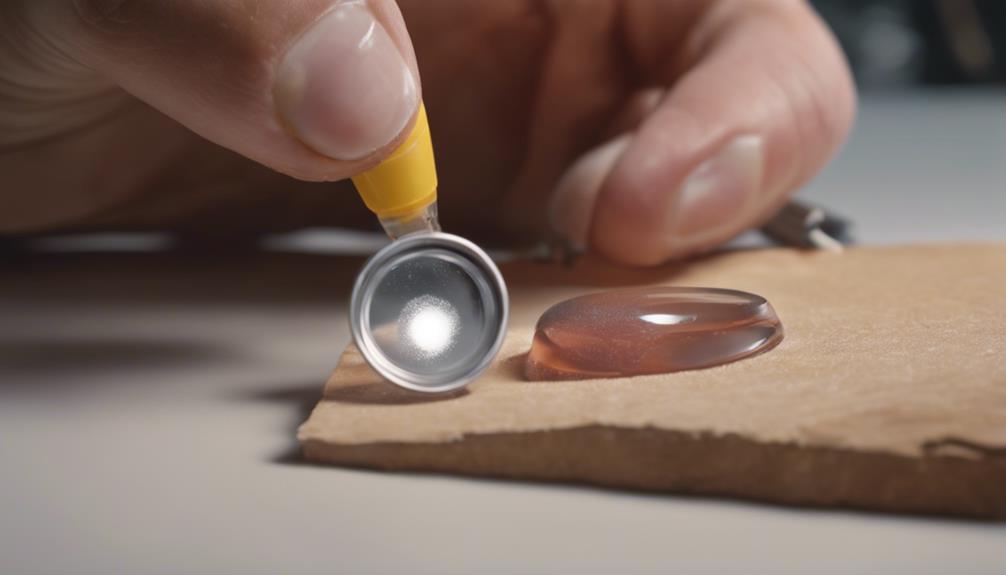
When applying glue-on nails, ensure that your natural nails are clean and dry to achieve the best results. Starting with a clean canvas ensures that the glue adheres smoothly, giving you a flawless finish that lasts. Freedom to express yourself through your nails is essential, and glue-on nails provide a quick and easy way to change up your look without commitment.
To apply the glue-on nails, simply place a small drop of nail glue on your natural nail and press the artificial nail onto it firmly. Hold for a few seconds to let it set, and voilà, you're all set to rock your new nails! The freedom to switch up your style whenever you want is empowering, and with glue-on nails, the possibilities are endless.
Components of Nail Glue
When considering the components of nail glue, it's essential to understand the ingredients that make up this adhesive. Knowing the adhesive application process and the potential nail health concerns associated with glue-on nails will provide you with a comprehensive understanding of how nail glue can impact your nails.
Nail Glue Ingredients
Exploring the composition of nail glue reveals the various essential components that contribute to its adhesive properties. Nail glue typically contains components such as ethyl cyanoacrylate, which is the main adhesive ingredient providing a strong bond.
Other ingredients like polymethyl methacrylate help improve flexibility and durability. Additionally, to enhance adhesion, some nail glues may contain ingredients like tosylamide formaldehyde resin. These ingredients work together to ensure a long-lasting bond between the artificial nail and your natural nail.
Understanding the components of nail glue can help you make informed choices when selecting a product that suits your needs. So next time you apply glue-on nails, know that these ingredients are working to keep your nails looking fabulous.
Adhesive Application Process
Understanding the components of nail glue allows you to apply the adhesive effectively for a long-lasting bond between the artificial nail and your natural nail. Nail glue typically consists of cyanoacrylate, which is the main bonding agent, along with additional ingredients like ethyl cyanoacrylate, polymethyl methacrylate, and butyl acetate.
To apply the glue, start by cleaning your nails thoroughly and ensuring they're dry. Apply a small drop of glue on your natural nail, then carefully press the artificial nail onto it, holding it in place for a few seconds to allow the bond to set. Be cautious not to use too much glue to avoid any spillage or excess buildup, which could affect the final result.
Nail Health Concerns
To maintain healthy nails while using nail glue, understanding the components of the adhesive is crucial. Here are some key components to be aware of:
- Cyanoacrylate: This is the main ingredient in most nail glues and is responsible for the adhesive properties.
- Ethyl Cyanoacrylate: A type of cyanoacrylate that's commonly used in nail glues for its quick-drying capabilities.
- Polymethyl Methacrylate (PMMA): Often added to nail glue to improve flexibility and durability.
- Formaldehyde: Some nail glues may contain formaldehyde, which can cause irritation or allergic reactions in some individuals.
Being mindful of these components can help you make informed decisions about the nail glue you choose and how you care for your nails.
Potential Nail Damage Risks
Using glue on nails can potentially weaken the natural nail structure over time. While glue-on nails can be a fun and convenient way to achieve stylish looks, they come with certain risks. Constantly applying and removing artificial nails can lead to damage such as thinning, peeling, and breakage of the natural nails. The chemicals in nail glue can also cause dryness and brittleness in the nails, making them more prone to damage. It's important to be mindful of these risks and take steps to minimize the potential damage to your nails.
To better understand the potential risks associated with using glue-on nails, let's break it down in a table:
| Potential Nail Damage Risks |
|---|
| Thinning of natural nails |
| Peeling of natural nails |
| Breakage of natural nails |
| Dryness and brittleness of nails |
Proper Application Techniques
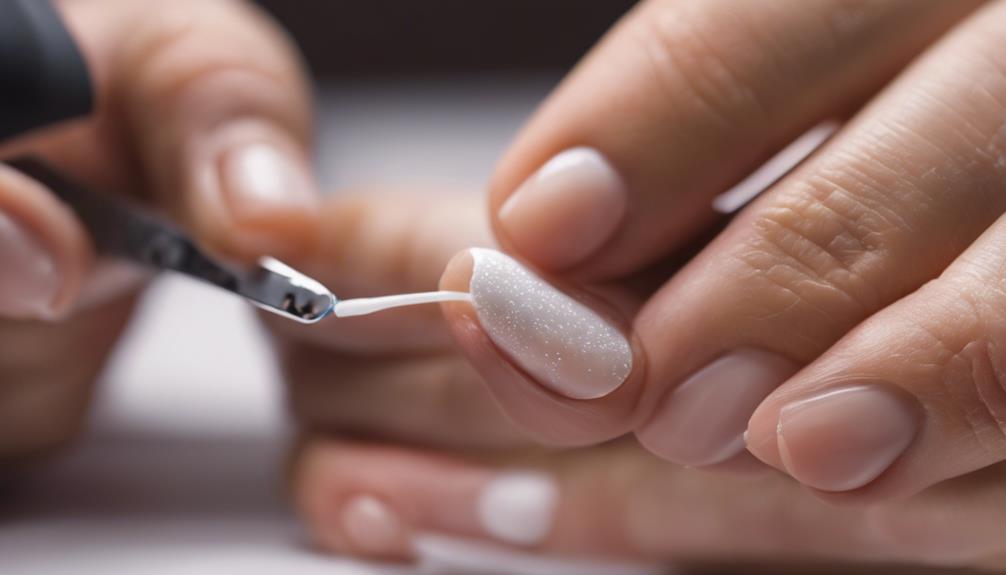
For best results when applying glue-on nails, ensure that you adhere to proper techniques to minimize potential damage to your natural nails. Follow these steps to achieve a flawless application without harming your nails:
- Prepare Your Nails: Before applying glue-on nails, make sure your natural nails are clean and dry. Remove any old nail polish and gently push back your cuticles.
- Select the Right Size: Choose the correct size of glue-on nails for each of your natural nails. Using nails that are too big can put pressure on your nail bed and cause damage.
- Apply Glue Carefully: Use a small amount of nail glue to attach the fake nail, avoiding contact with your cuticles. Press down firmly and hold in place for a few seconds to ensure a secure bond.
- Avoid Excessive Force: When filing or shaping the glue-on nails, be gentle to prevent weakening or damaging your natural nails underneath. Remember, a light touch goes a long way in maintaining nail health.
Removal Process and Precautions
When removing glue-on nails, prioritize gentle techniques to safeguard the health of your natural nails. Start by soaking your nails in warm, soapy water for about 10-15 minutes to help loosen the adhesive. Next, use a wooden cuticle stick to gently push the edges of the fake nails away from your natural nails. Avoid forcefully pulling or ripping off the glue-on nails, as this can cause damage and weaken your natural nails.
If you prefer a quicker method, you can use acetone to dissolve the adhesive. Soak a cotton ball in acetone, place it on top of the nail, then wrap your fingertips in aluminum foil to keep the cotton ball in place. Let it sit for about 15-20 minutes before gently sliding off the fake nails.
After removing the glue-on nails, moisturize your natural nails and cuticles with a nourishing oil or cream to replenish moisture. Remember, being gentle during the removal process is key to keeping your nails healthy and strong.
Nail Health Maintenance Tips
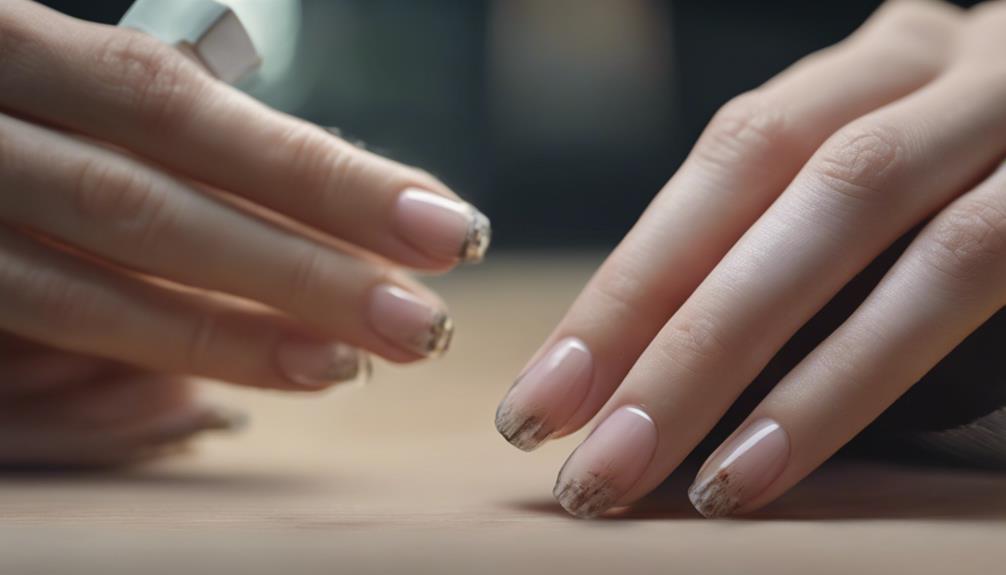
To maintain healthy nails, regularly trim them to prevent breakage and promote strong growth. Additionally, follow these tips to ensure your nails stay in top condition:
- Stay Hydrated: Drink plenty of water to keep your nails hydrated and prevent them from becoming brittle.
- Protect Your Nails: Wear gloves while doing chores or working with harsh chemicals to shield your nails from damage.
- Balanced Diet: Eat foods rich in vitamins and minerals like biotin, zinc, and iron to support nail health and growth.
- Moisturize: Apply a nourishing cuticle oil or hand cream regularly to keep your nails and surrounding skin moisturized.
Benefits of Glue-On Nails
Glue-on nails offer a convenient and quick way to achieve salon-quality manicures at home. They provide a hassle-free solution for those looking to enhance their nails without spending hours at a salon. Here are some benefits of using glue-on nails:
| Benefits of Glue-On Nails | ||||
|---|---|---|---|---|
| 1. Time-Saving | 2. Variety | 3. Cost-Effective | 4. Easy Removal | 5. Nail Protection |
| Allows for quick application | Comes in various designs and lengths | Cheaper than frequent salon visits | Can be easily removed | Offers a layer of protection to natural nails |
With glue-on nails, you can save time by skipping salon appointments and enjoy a wide range of designs to suit your style. They are cost-effective compared to regular salon visits and can be effortlessly taken off when needed. Additionally, these nails can act as a shield, protecting your natural nails from damage and allowing them to grow without hindrance. Enjoy the flexibility and creativity that glue-on nails bring to your beauty routine.
Common Misconceptions Debunked
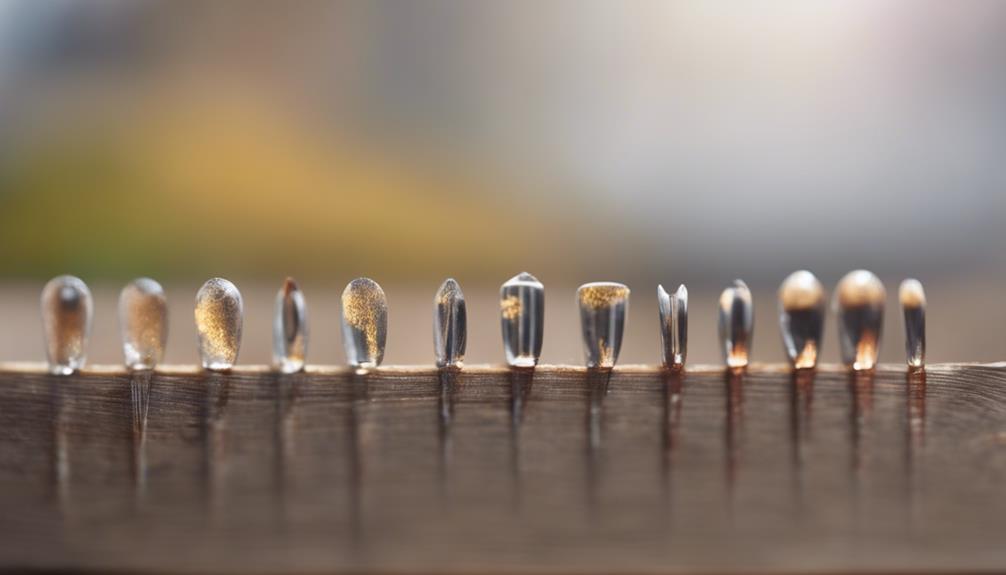
You may have heard various myths about glue-on nails and their impact on nail health. Let's clear the air on nail glue safety and common concerns surrounding nail health when using glue-on nails.
Understanding the facts can help you make informed decisions about your nail care routine.
Nail Glue Safety
Despite common misconceptions, using nail glue properly can actually be safe and beneficial for your nails. Here's why:
- Proper Application: Ensuring you apply the glue correctly reduces the risk of damage.
- Short-Term Use: Using nail glue occasionally is unlikely to harm your nails.
- Quality Products: Opting for high-quality nail glues minimizes potential risks.
- Moisturize: Keeping your nails hydrated with moisturizers can counteract any drying effects of the glue.
Nail Health Concerns
When it comes to nail health concerns, it's important to address common misconceptions that may lead to unnecessary worries about using nail glue. Contrary to popular belief, using nail glue in moderation and following proper application and removal techniques is unlikely to cause significant damage to your nails.
Some people worry that glue on nails can weaken or thin their natural nails, but as long as you take breaks between applications and properly care for your nails, they should remain healthy.
Additionally, concerns about glue causing fungal infections are largely unfounded if you maintain good hygiene practices. Overall, using glue on nails can be a fun and stylish way to enhance your look without compromising your nail health.
Nail Strengthening Strategies
Using the right nail strengthening strategies can help improve the health and resilience of your nails. Here are some tips to keep your nails strong and healthy:
- Proper Nutrition: Ensure you're consuming a balanced diet rich in vitamins and minerals essential for nail health, such as biotin, vitamin E, and omega-3 fatty acids.
- Moisturize Regularly: Keep your nails and cuticles hydrated by applying a nourishing nail oil or moisturizer daily.
- Avoid Harsh Chemicals: Limit exposure to harsh chemicals found in cleaning products and nail polish removers that can weaken nails over time.
- Gentle Nail Care: Be gentle when filing or buffing your nails, and avoid using them as tools to prevent unnecessary stress and damage.
Seeking Professional Advice
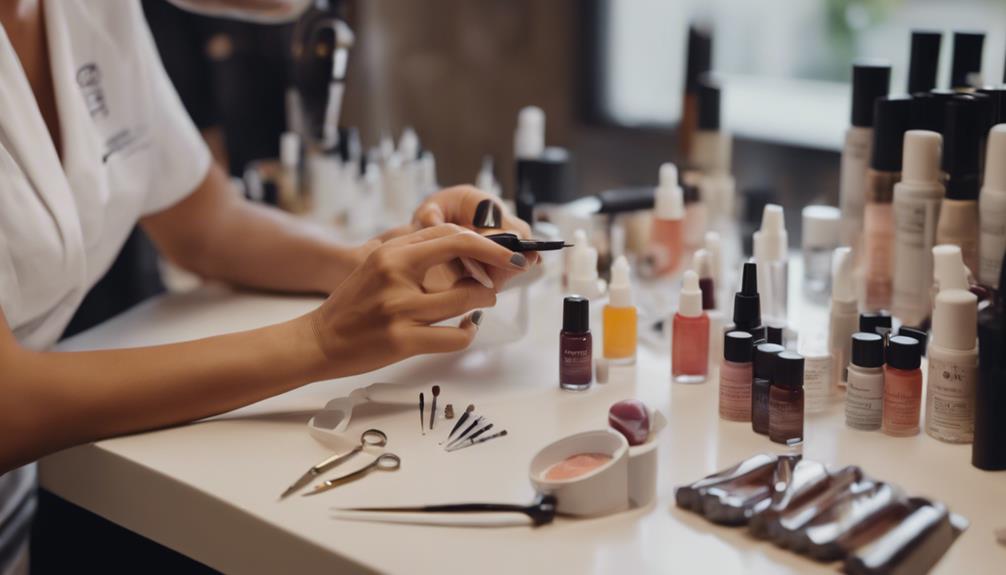
For personalized guidance on nail care and strengthening techniques, consulting with a professional nail technician or dermatologist can provide valuable insights tailored to your specific needs. These experts can assess the current state of your nails, discuss any concerns you may have, and recommend suitable treatments or products. By seeking professional advice, you can gain a better understanding of how to maintain healthy nails and prevent potential damage.
| Benefits of Seeking Professional Advice | Description | Outcome |
|---|---|---|
| Personalized Recommendations | Tailored advice for you | Better nail care routine |
| Professional Assessment | Expert evaluation | Improved nail health |
| Preventative Measures | Tips to avoid damage | Stronger, healthier nails |
Frequently Asked Questions
Can Glue-On Nails Cause Allergic Reactions?
Glue-on nails can cause allergic reactions. Be aware of potential skin sensitivities. If redness, itching, or swelling occur, remove the nails and consult a healthcare professional. Prioritize your health and well-being.
How Long Do Glue-On Nails Typically Last?
Like a fleeting breeze, glue-on nails can last around 1-2 weeks with proper care. Enjoy the convenience and freedom of this temporary style choice, knowing you can switch up your look easily.
Can Wearing Glue-On Nails Affect Nail Growth?
Wearing glue-on nails can potentially affect nail growth due to prolonged use and improper removal. It's important to give your nails breaks in between applications to allow them to breathe and stay healthy.
Are There Any Specific Types of Nail Glue to Avoid?
When it comes to nail glue, steer clear of those that seem sketchy or overly sticky. Opt for reputable brands to safeguard your nails. Remember, using the wrong glue can be like inviting a tornado to your nail party!
Can Glue-On Nails Lead to Fungal Infections?
Glue-on nails can potentially lead to fungal infections if not applied and removed properly. It's essential to maintain good nail hygiene, avoid prolonged wear, and clean your nails regularly to minimize the risk.


